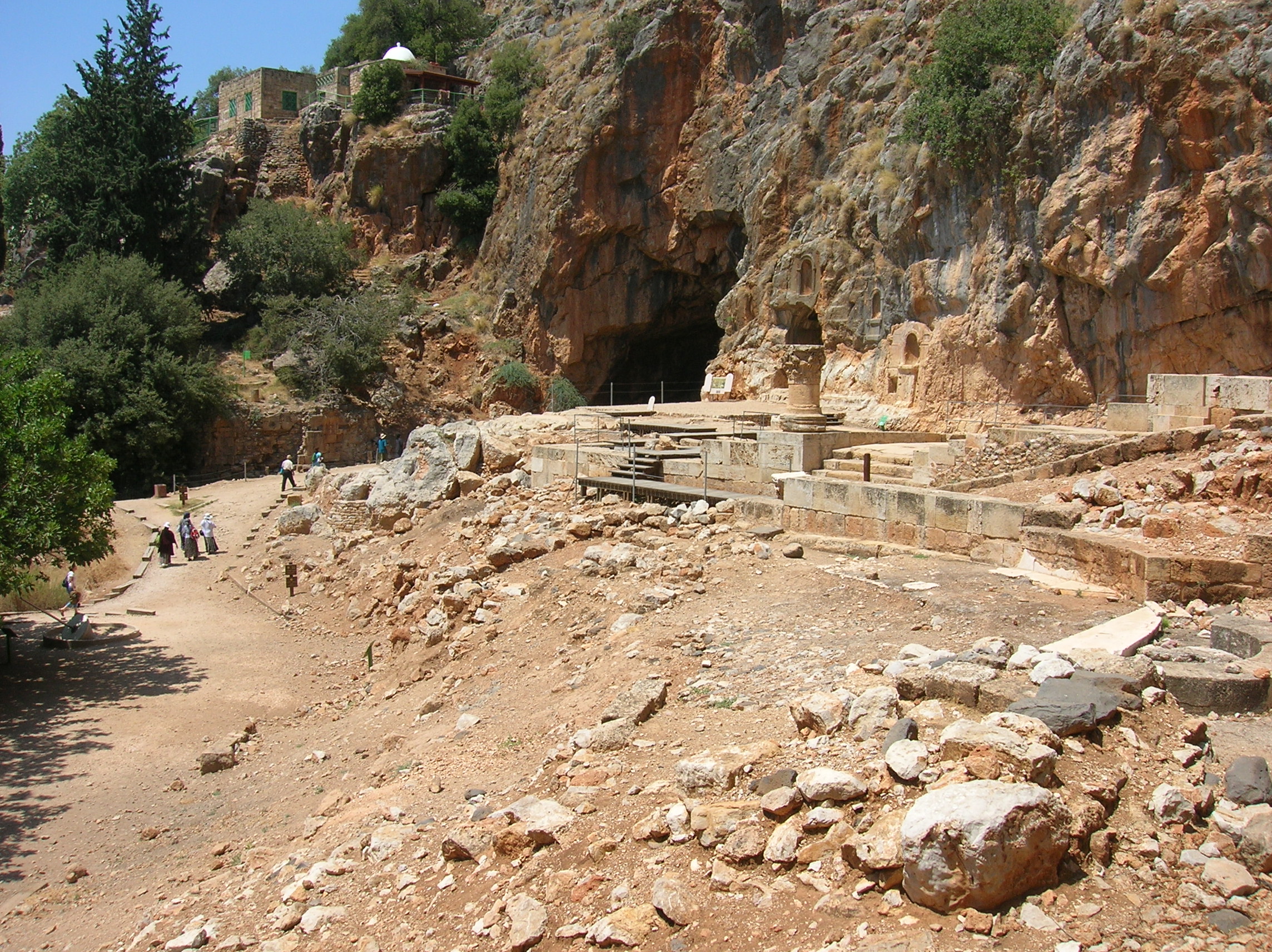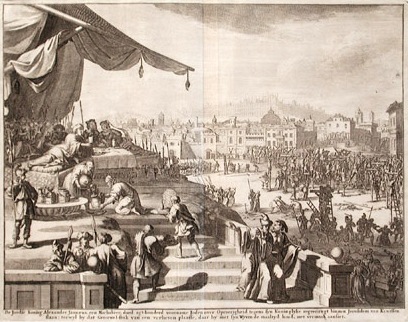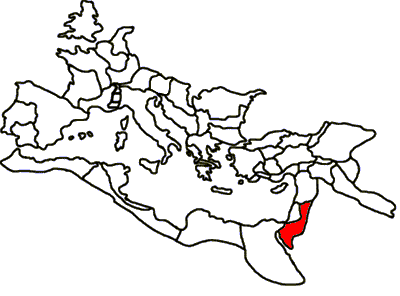|
Gamla
Gamla, alt. sp. Gamala ( he, גַּמְלָא, The Camel) was an ancient Jewish city on the Golan Heights. It is believed to have been founded as a Seleucid fort during the Syrian Wars which was turned into a city under Hasmonean rule in 81 BCE. During the Great Revolt, it became an important stronghold for rebels and because of this Gamla is a symbol for the modern state of Israel and an important historical and archaeological site. It lies within the current Gamla nature reserve and is a prominent tourist attraction. History Situated at the southern part of the Golan, overlooking the Sea of Galilee, Gamla was built on a steep hill shaped like a camel's hump, from which it derives its name (''Gamla'' meaning 'the camel' in Aramaic). Early history Archaeological excavations have shown that in the place of Gamla there was already a settlement in the Early Bronze Age. The settlement was probably agricultural, as archaeologists have found evidence of long-term use of flint sic ... [...More Info...] [...Related Items...] OR: [Wikipedia] [Google] [Baidu] |
Gamla On Map
Gamla, alt. sp. Gamala ( he, גַּמְלָא, The Camel) was an ancient Jewish city on the Golan Heights. It is believed to have been founded as a Seleucid fort during the Syrian Wars which was turned into a city under Hasmonean rule in 81 BCE. During the Great Revolt, it became an important stronghold for rebels and because of this Gamla is a symbol for the modern state of Israel and an important historical and archaeological site. It lies within the current Gamla nature reserve and is a prominent tourist attraction. History Situated at the southern part of the Golan, overlooking the Sea of Galilee, Gamla was built on a steep hill shaped like a camel's hump, from which it derives its name (''Gamla'' meaning 'the camel' in Aramaic). Early history Archaeological excavations have shown that in the place of Gamla there was already a settlement in the Early Bronze Age. The settlement was probably agricultural, as archaeologists have found evidence of long-term use of flin ... [...More Info...] [...Related Items...] OR: [Wikipedia] [Google] [Baidu] |
Golan Heights
The Golan Heights ( ar, هَضْبَةُ الْجَوْلَانِ, Haḍbatu l-Jawlān or ; he, רמת הגולן, ), or simply the Golan, is a region in the Levant spanning about . The region defined as the Golan Heights differs between disciplines: as a geological and biogeographical region, the term refers to a basaltic plateau bordered by the Yarmouk River in the south, the Sea of Galilee and Hula Valley in the west, the Anti-Lebanon with Mount Hermon in the north and Wadi Raqqad in the east. As a geopolitical region, it refers to the border region captured from Syria by Israel during the Six-Day War of 1967; the territory has been occupied by the latter since then and was subject to a de facto Israeli annexation in 1981. This region includes the western two-thirds of the geological Golan Heights and the Israeli-occupied part of Mount Hermon. The earliest evidence of human habitation on the Golan dates to the Upper Paleolithic period. According to the Bible ... [...More Info...] [...Related Items...] OR: [Wikipedia] [Google] [Baidu] |
Gamla Nature Reserve
Gamla nature reserve is a nature reserve and archaeological site located in the center of the Golan Heights, about 20 km south to the Israeli settlement of Katzrin. It adjoins the Yehudiya Forest Nature Reserve. The nature reserve stretches along two streams, Gamla and the Daliot, and includes natural and archaeological attractions. Among the former are the largest nesting colony of griffon vultures in Israel, various other birds of prey, among a variety of wildlife and wild plants. Among the latter are the ancient city of Gamla and a Bronze Age dolmen field containing 716 dolmens. At the head of the Gamla stream there is a 51-meter high waterfall, the highest in Israel and the Israeli occupied territories, which dries up during summer and autumn.Aviva Bar-Am "Going for Gold in Gamla" Jerusalem Post, January 31, 2010. Accessed July 12, 21018. [...More Info...] [...Related Items...] OR: [Wikipedia] [Google] [Baidu] |
First Jewish–Roman War
The First Jewish–Roman War (66–73 CE), sometimes called the Great Jewish Revolt ( he, המרד הגדול '), or The Jewish War, was the first of three major rebellions by the Jews against the Roman Empire, fought in Roman-controlled Judea, resulting in the destruction of Jewish towns, the displacement of its people and the appropriation of land for Roman military use, as well as the destruction of the Jewish Temple and polity. The Great Revolt began in the year 66 CE, during the twelfth year of the reign of Nero, originating in Roman and Jewish religious tensions. The crisis escalated due to anti-taxation protests and attacks upon Roman citizens by the Jews. The Roman governor, Gessius Florus, responded by plundering the Second Temple and arresting numerous senior Jewish figures. This prompted widespread rebellion in Jerusalem that culminated in the capture of the Roman military garrison by rebel forces as the pro-Roman king Herod Agrippa II and Roman officials f ... [...More Info...] [...Related Items...] OR: [Wikipedia] [Google] [Baidu] |
Sea Of Galilee
The Sea of Galilee ( he, יָם כִּנֶּרֶת, Judeo-Aramaic: יַמּא דטבריא, גִּנֵּיסַר, ar, بحيرة طبريا), also called Lake Tiberias, Kinneret or Kinnereth, is a freshwater lake in Israel. It is the lowest freshwater lake on Earth and the second-lowest lake in the world (after the Dead Sea, a saltwater lake), at levels between and below sea level. It is approximately in circumference, about long, and wide. Its area is at its fullest, and its maximum depth is approximately .Data Summary: Lake Kinneret (Sea of Galilee) The lake is fed partly by underground springs, but its main source is the |
Hasmonean Dynasty
The Hasmonean dynasty (; he, ''Ḥašmōnaʾīm'') was a ruling dynasty of Judea and surrounding regions during classical antiquity, from BCE to 37 BCE. Between and BCE the dynasty ruled Judea semi-autonomously in the Seleucid Empire, and from roughly 110 BCE, with the empire disintegrating, Judea gained further autonomy and expanded into the neighboring regions of Perea, Samaria, Idumea, Galilee, and Iturea. Some modern scholars regard the Hasmonean realm as an independent Israel. The Hasmonean rulers took the Greek title '' basileus'' ("king" or "emperor"). Forces of the Roman Republic conquered the Hasmonean kingdom in 63 BCE and made it into a client state; Herod the Great displaced the last reigning Hasmonean client-ruler in 37 BCE. Simon Thassi established the dynasty in 141 BCE, two decades after his brother Judas Maccabeus ( ''Yehudah HaMakabi'') had defeated the Seleucid army during the Maccabean Revolt of 167 to 141 BCE. According to 1 Maccabees, 2 Maccab ... [...More Info...] [...Related Items...] OR: [Wikipedia] [Google] [Baidu] |
Alexander Jannaeus
Alexander Jannaeus ( grc-gre, Ἀλέξανδρος Ἰανναῖος ; he, ''Yannaʾy''; born Jonathan ) was the second king of the Hasmonean dynasty, who ruled over an expanding kingdom of Judea from 103 to 76 BCE. A son of John Hyrcanus, he inherited the throne from his brother Aristobulus I, and married his brother's widow, Queen Salome Alexandra. From his conquests to expand the kingdom to a bloody civil war, Alexander's reign has been generalised as cruel and oppressive with never-ending conflict. The major historical sources of Alexander's life are Josephus's ''Antiquities of the Jews'' and '' The Jewish War''. The kingdom of Alexander Jannaeus was the largest and strongest known Jewish State outside of biblical sources, having conquered most of Palestine's Mediterranean coastline and regions surrounding the Jordan River. Alexander also had many of his subjects killed for their disapproval of his handling of state affairs. Due to his territorial expansion and inte ... [...More Info...] [...Related Items...] OR: [Wikipedia] [Google] [Baidu] |
Shmarya Guttman
Shmarya Guttman ( he, שמריה גוטמן; 1909–1996) was an Israeli archaeologist. Early years Shmarya Guttman was born in Glasgow, Scotland. His parents were Russian immigrants. The family immigrated to Palestine when he was three. At the age of 17, he moved to Kibbutz Na'an, where he worked as a farmer. Career In the 1930s, he served as an emissary to Jewish communities in Eastern Europe. Before the establishment of the State of Israel in 1948, he headed an intelligence unit of the Haganah Haganah ( he, הַהֲגָנָה, lit. ''The Defence'') was the main Zionist paramilitary organization of the Jewish population ("Yishuv") in Mandatory Palestine between 1920 and its disestablishment in 1948, when it became the core of the .... Later he was involved in diplomatic negotiations and took part in operations to bring Iraqi Jews to Israel. Archaeology career In the 1960s and 1970s, Guttman was on the team that excavated Masada, which he had climbed with t ... [...More Info...] [...Related Items...] OR: [Wikipedia] [Google] [Baidu] |
Nabatean
The Nabataeans or Nabateans (; Nabataean Aramaic: , , vocalized as ; Arabic: , , singular , ; compare grc, Ναβαταῖος, translit=Nabataîos; la, Nabataeus) were an ancient Arab people who inhabited northern Arabia and the southern Levant. Their settlements—most prominently the assumed capital city of Raqmu (present-day Petra, Jordan)—gave the name ''Nabatene'' ( grc, Ναβατηνή, translit=Nabatēnḗ) to the Arabian borderland that stretched from the Euphrates to the Red Sea. The Nabateans emerged as a distinct civilization and political entity between the 4th and 2nd centuries BCE,Taylor, Jane (2001). ''Petra and the Lost Kingdom of the Nabataeans''. London: I.B.Tauris. pp. 14, 17, 30, 31. . Retrieved 8 July 2016. with their kingdom centered around a loosely controlled trading network that brought considerable wealth and influence across the ancient world. Described as fiercely independent by contemporary Greco-Roman accounts, the Nabataeans were annexe ... [...More Info...] [...Related Items...] OR: [Wikipedia] [Google] [Baidu] |
Aretas IV Philopatris
Aretas IV Philopatris ( Nabataean Aramaic: 𐢗𐢓𐢆 𐢊𐢛𐢞𐢞 𐢛𐢊𐢒 ''Ḥārīṯat Rāḥem-ʿammeh'', "Aretas, friend of his people") was the King of the Nabataeans from roughly 9 BC to AD 40. His daughter Phasaelis was married to, and divorced from, Herod Antipas. Herod then married his stepbrother's wife, Herodias. It was opposition to this marriage that led to the beheading of John the Baptist. After he received news of the divorce, Aretas invaded the territory of Herod Antipas and defeated his army. Rise to power Aretas came to power after the assassination of Obodas III, who was apparently poisoned. Josephus says that he was originally named Aeneas, but took "Aretas" as his throne name. An inscription from Petra suggests that he may have been a member of the royal family, as a descendant of Malichus I. The capital of his kingdom was a prosperous trading city, Petra, some 170 miles south of Amman. Petra is famous for the many monuments carved i ... [...More Info...] [...Related Items...] OR: [Wikipedia] [Google] [Baidu] |
The War Of The Jews
''The Jewish War'' or ''Judean War'' (in full ''Flavius Josephus' Books of the History of the Jewish War against the Romans'', el, Φλαυίου Ἰωσήπου ἱστορία Ἰουδαϊκοῦ πολέμου πρὸς Ῥωμαίους βιβλία, ''Phlauiou Iōsēpou historia Ioudaikou polemou pros Rōmaious biblia''), also referred to in English as ''The Wars of the Jews'', is a book written by Josephus, a first-century Roman-Jewish historian. It has been described by Steve Mason as "perhaps the most influential non-biblical text of Western history". Content Divided into seven books, it opens with a summary of Jewish history from the capture of Jerusalem by the Seleucid ruler Antiochus IV Epiphanes in 168 BC to the first stages of the First Jewish–Roman War (Book I and II). The next five books detail the unfolding of the war, under Roman generals Vespasian and Titus, to the death of the last Sicarii. The book was written about 75 AD, originally in Josephu ... [...More Info...] [...Related Items...] OR: [Wikipedia] [Google] [Baidu] |
Josephus Flavius
Flavius Josephus (; grc-gre, Ἰώσηπος, ; 37 – 100) was a first-century Romano-Jewish historian and military leader, best known for ''The Jewish War'', who was born in Jerusalem—then part of Roman Judea—to a father of priestly descent and a mother who claimed royal ancestry. He initially fought against the Romans during the First Jewish–Roman War as head of Jewish forces in Galilee, until surrendering in 67 AD to Roman forces led by Vespasian after the six-week siege of Yodfat. Josephus claimed the Jewish Messianic prophecies that initiated the First Jewish–Roman War made reference to Vespasian becoming Emperor of Rome. In response, Vespasian decided to keep Josephus as a slave and presumably interpreter. After Vespasian became Emperor in 69 AD, he granted Josephus his freedom, at which time Josephus assumed the emperor's family name of Flavius. Simon Claude Mimouni, ''Le Judaïsme ancien du VIe siècle avant notre ère au IIIe siècle de notre ère : De ... [...More Info...] [...Related Items...] OR: [Wikipedia] [Google] [Baidu] |










